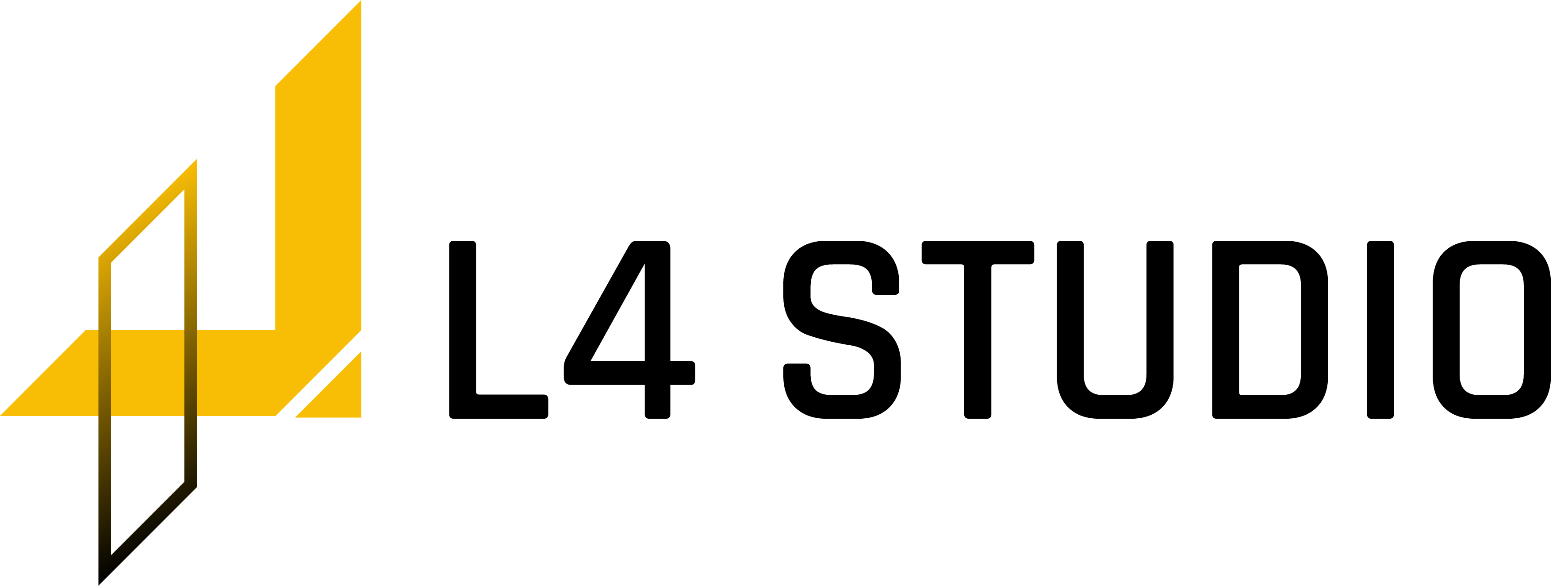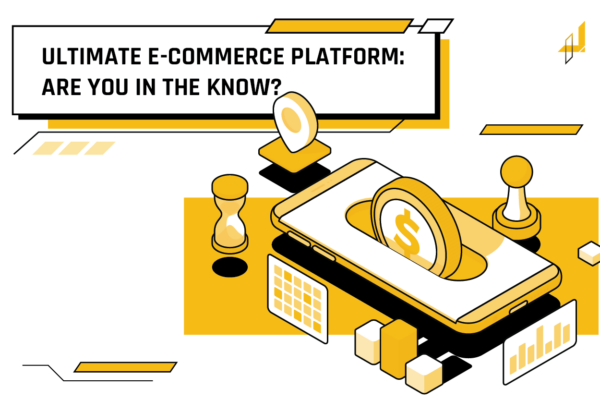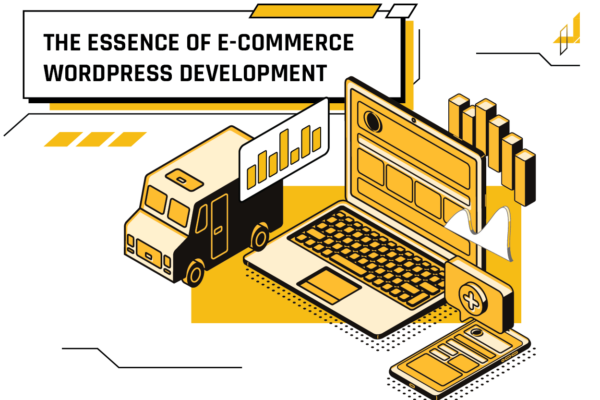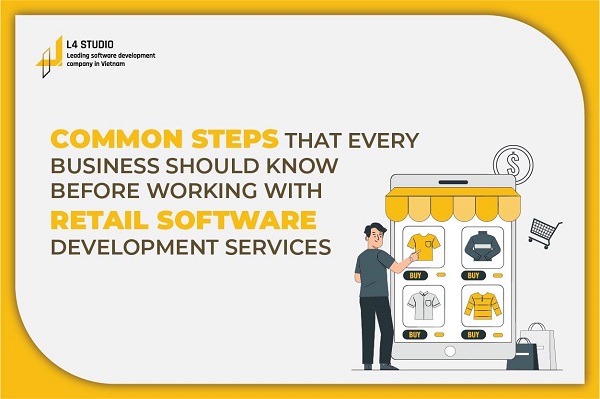
COMMON STEPS THAT EVERY BUSINESS SHOULD KNOW BEFORE WORKING WITH RETAIL SOFTWARE DEVELOPMENT SERVICES
Over the last few years, the retail industry has evolved considerably. Innovative retail technologies have increased the sector’s speed and competitiveness. The introduction of cloud technology has also completely transformed the retail industry. These technological advancements increase the demand for advanced and customized retail software development services that can effectively automate the majority of routine store operations.
Retail business software solutions may assist both brick-and-mortar stores and eCommerce businesses, as well as a combination of the two. And now we’ll look at how you may design a retail software solution for your company.
1. RETAIL SOFTWARE DEVELOPMENT SERVICES
Retail software development services refer to the process of creating software applications that meet the specific needs of businesses operating in the retail sector. These services can include developing custom software solutions for managing inventory, sales, customer data, supply chain management, and other aspects of retail operations.
Retail software development services can be used by various types of retail businesses, including brick-and-mortar stores, online retailers, e-commerce marketplaces, and multi-channel retailers. The goal of these services is to create software applications that help retailers to improve their operational efficiency, enhance customer experience, and increase revenue.
Some common types of retail software applications include point of sale (POS) systems, inventory management systems, customer relationship management (CRM) software, e-commerce platforms, supply chain management systems, and analytics and reporting tools.
Retail software development services typically involve a collaborative process between the software development team and the client, working closely to identify the specific needs of the business and develop customized solutions to meet those needs. The development process may include analysis and planning, software design and development, testing, deployment, and ongoing maintenance and support.
Overall, retail software development services can provide significant benefits to businesses operating in the retail sector, helping to streamline operations, improve customer experience, and increase revenue.
2. STEPS TO CREATING SOFTWARE FOR RETAIL
2.1 CHOOSE THE RIGHT RETAIL SOFTWARE DEVELOPMENT SERVICES AGENCY
Choosing a suitable software provider is a critical and difficult task. Take your time and make an informed decision. Your decision will determine how smoothly the implementation goes and how positively a future system will impact your business performance.
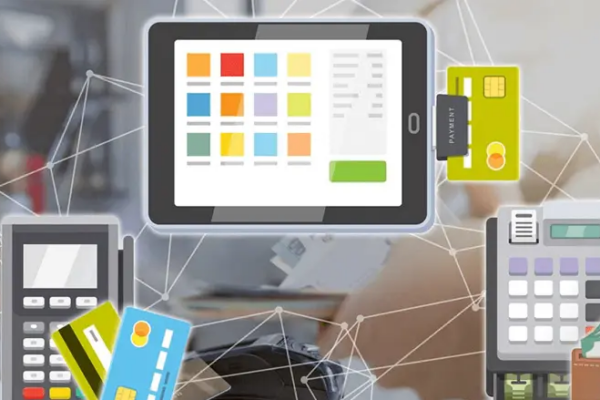
Figure 1. A suitable software development agency is important for your business’s success
The main recommendation is to choose retail software development services that specialize in the retail market because:
- You will only require minor software customization.
- You will receive a ready-to-use database, whereas databases for other industries vary greatly and must be reshaped or developed from scratch.
- Your vendor will speak the same language as you, which will eliminate many misunderstandings.
- You will be able to obtain legitimate references from peers and learn from their experiences.
Another consideration is deciding between cloud and on-premise hosting. Because the system can be deployed anywhere, you should base your decision on your company’s requirements and budget.
2.2 MAKE A PLAN
A well-defined aim might assist you in deciding how to construct your retail software. Outline the major features you want in retail software throughout the planning and budgeting stages.
You must also select whether to use cloud or on-premise technologies. Having an on-premise solution necessitates putting the program on your local servers, which will necessitate collaboration with IT professionals to manage. Cloud-based systems, on the other hand, are typically less expensive and more available to consumers as long as their device is connected to the internet.
Businesses may need weeks or months to debate and approve their retail software project plan and budget. Make the most of these planning meetings, since they will guide your next moves.
2.3 SET UP YOUR BUDGET
When you’ve completed your research, planning, prototyping, and sourcing, you should have a better idea of how much it will cost to manufacture your product. Costing is a business analysis procedure in which you total up all of the information obtained thus far to establish your cost of goods sold (COGS) in order to estimate a retail price and gross margin.
Create a spreadsheet with each additional cost included as a single line item. This should cover the expenses of all raw supplies, factory setup, production, and shipment. Shipping, import taxes, and any tariffs you will need to pay in order to get your finished product into the hands of the client must all be considered, since these expenses can have a major influence on your COGS, depending on where you produce the product.

Figure 2. Setting up a budget for the project is critical for the function of the result
With this in mind, you can opt for an off-the-shelf solution or custom development.
Your future solution vision should be in line with the budget you have available. The planning stage could last two to five weeks.
2.4 DEVELOPMENT AND IMPLEMENTATION
It is obvious that custom development takes significantly longer than the implementation of ready-made solutions.
In any case, your company will undergo significant technical and cultural changes during the implementation process. As a result, it is critical to:
Assemble an internal team of professional specialists with relevant expertise who will participate in the implementation, prepare the staff for the new system, explain its benefits, and provide the necessary training; perform data cleansing (make determinations concerning documents and other items in your legacy system; eliminate inactive accounts and records that have not been processed for years to simplify the migration).
Depending on the circumstances of the company, this stage can last anywhere from a few months to more than a year.
2.5 TESTING
To launch a new product, it must first be validated and tested. This assures that all aspect of the product, from creation to marketing, functions properly before it is introduced to the public.
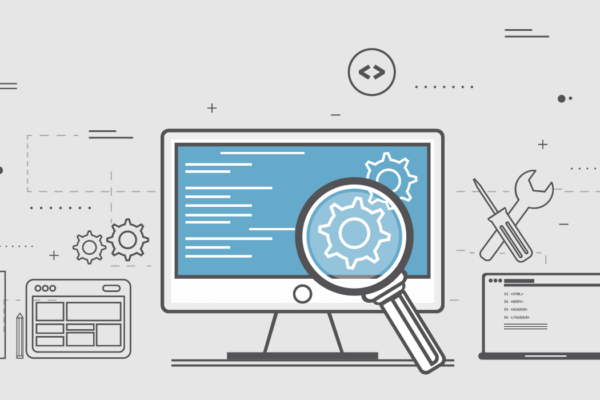
Figure 3. Testing help fine-tune the user experience for your customer
To assure the quality of your goods, do the following:
- Concept development and testing: You may have created your prototype well, but you will still need to work through any challenges that emerge when developing the concept. This might include the creation of software or the actual manufacture of the first prototype. To ensure quality, test functionality with the assistance of team members and beta testers.
- Front-end testing: During this step, examine the front-end functionality for any issues with development code or consumer-facing problems. This involves testing the ecommerce feature and making sure it’s ready for launch.
- Marketing test: Before you begin manufacturing your final product, test your marketing strategy for functionality and mistakes. This is also a good moment to double-check that all campaigns are properly set up and ready to go.
2.6 MAINTENANCE THE APPS
It is now time to launch the software after it has been approved. You can submit your software to various app stores, including Google Play and Apple App Store.
The work, however, does not end there. After your software is released, you must continue to monitor it to ensure that it is functioning properly. Customers may even begin to use the software in ways you did not anticipate. Fortunately, professional software development firms will continue to collaborate with you, release patches and updates, and resolve user-reported issues.
A system that has been successfully implemented requires ongoing support and maintenance. This can be provided by the software vendor or by your technical experts.
There are various reasons why app maintenance is critical to an application’s success:
- Ensures continuous functionality: Frequent app maintenance guarantees that it continues to perform as planned, with problems and malfunctions being repaired as soon as possible.
- Improves user experience: Maintenance efforts such as speed optimization and bug patching assist to improve the user experience, ensuring that users continue to find value in the app.
- Improves app security: Frequent updates and security patches assist to resolve any vulnerabilities and guarantee that the app stays safe and protected against cyber attacks.
- App maintenance operations: performance monitoring and optimization assist to improve the app’s speed, responsiveness, and general performance.
- Maintains the app’s relevance: Frequent updates guarantee that the app remains current and relevant, satisfying users’ growing demands and keeping up with the newest technological advances.
- Reduces long-term expenses: Addressing difficulties early on can assist to lessen the chance of serious problems later on, thereby saving considerable costs associated with repairing larger concerns.
SUMMARY
Retail software can help your business in a variety of ways. It can improve the time efficiency and reach of your retail brand while also providing real-time visibility of your stocks and inventory. Your retail software must be as dynamic as the industry. Working with expert software developers will ensure that your app remains relevant for years to come.
It’s especially important to remember that as digital technologies evolve, your ability to improve your products, services, and operations will be limitless. Some suitable retail software development services are one that is ready to learn and change.
Source: Internet
——————————
L4 STUDIO – LEADING SOFTWARE DEVELOPMENT COMPANY IN VIETNAM
Website: https://l4studio.net/
Email: hi@l4studio.net
Phone: (+84) 28 6675 6685
Our Mobile App Development Services: https://l4studio.net/mobile-app-development/
For more interesting blogs: https://l4studio.net/it-knowledge/
Follow us at: https://www.facebook.com/L4Studiovn/
Read more: SOME OF THE MOST COMMON E-COMMERCE DEVELOPMENT SERVICES YOU SHOULD KNOW ABOUT
